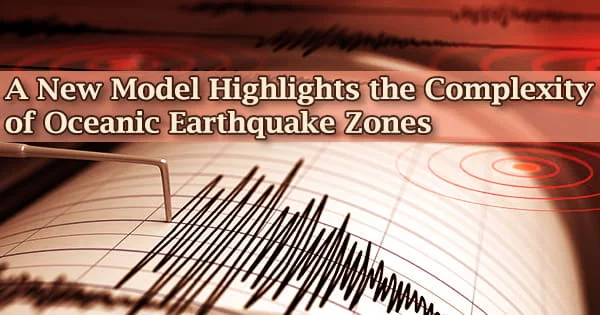A model of the 2020 Caribbean earthquake was created by University of Tsukuba researchers using seismic data from all over the world. Oceanic transform faults are frequently employed in research of earthquake dynamics since they are typically thought to be linear and straightforward.
The research team discovered that even in a supposedly straightforward linear fault system, considerable complexity in rupture speed and direction might occur.
A significant oceanic earthquake measuring 7.7 on the Richter scale struck the Oriente transform fault in the Caribbean Sea between Jamaica and Cuba on January 28, 2020. It produced a small tsunami that measured 0.11 meters in height and was detected as far away as Florida.
A new finite-fault inversion technique has been created by a research team at the University of Tsukuba for creating models using teleseismic waveform data from earthquake monitoring stations. This novel method of utilising the data resolves the fault geometry in a more adaptable way.
Instead of depending on preconceived notions, the faulting components are individually assessed in a larger model that encompasses both time and space, allowing for the consideration of all potential rupture evolutions.
The team was eager to exploit the earthquake in the Caribbean to learn more about the faulting mechanisms that take place during these shallow oceanic quakes.
The results revealed complex rupture during the earthquake, caused by a bend in the fault that led to the changes in rupture speed and direction detected in the monitoring data. These variations triggered several successive rupture episodes that occurred along the 300-km-long fault.
Professor Ryo Okuwaki
“Some cases of complex rupture dynamics have recently been reported in previous earthquake studies, raising the question of whether or not we are correctly modeling these even in supposedly simple fault systems,” says study author Professor Yuji Yagi.
“The initial monitoring of this January 2020 event suggested variations in the waveform shape between two stations at similar distances from the epicenter, suggesting that there remains complexity to be explored at this fault.”
This was a great chance to test the novel approach the team had devised, which built a thorough model of the geophysical processes occurring inside the earthquake’s triggering fault using information from 52 seismic sites.
“The results revealed complex rupture during the earthquake, caused by a bend in the fault that led to the changes in rupture speed and direction detected in the monitoring data,” explains author Professor Ryo Okuwaki. “These variations triggered several successive rupture episodes that occurred along the 300-km-long fault.”
The modeling method also enables some comments to be made regarding the nature of the nearby seafloor and the possibility of subsidence occurring after the seismic event.
These findings suggest that the supposedly straightforward and linear oceanic transform faults may actually be much more complex than previously thought, necessitating a more thorough approach to earthquake modeling. The evolution of the ocean floor at the transform boundary may interact with the motion of the earthquake-fault, according to this research.





